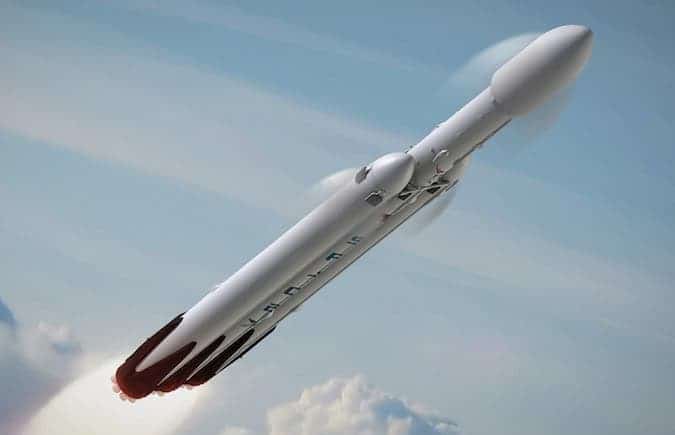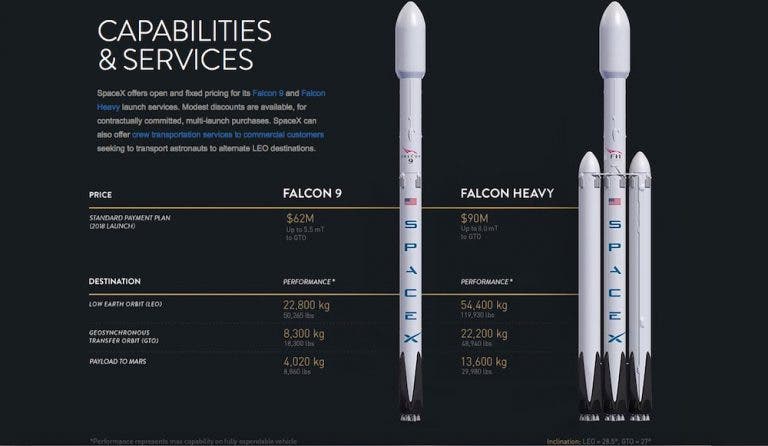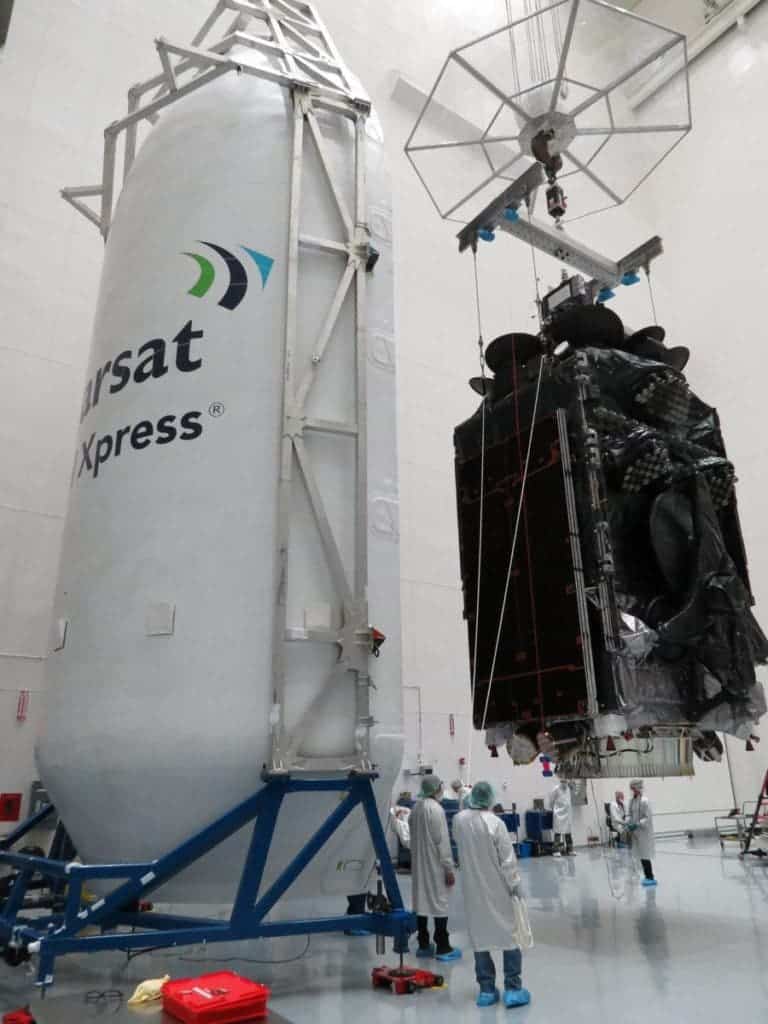
Ever since Elon Musk founded SpaceX at the turn of the new century, he has been dreaming about building a huge rocket with three nine-engine boosters strapped to it. More than a decade later, this fabled rocket, called the Falcon Heavy, is nearly ready. According to inside sources, Falcon Heavy’s maiden voyage could take place as early as fall 2017, ending a four-year long wait. Once it officially enters service, governments and companies will be able to launch instruments, cargo, and various machines that they previously couldn’t due to payload restrictions.
The most powerful rocket in the world
The Falcon Heavy’s specs are simply mind blowing. Basically, it’s made out of three Falcon 9 rockets — a standard Falcon 9 with two additional Falcon 9 first stages acting as liquid strap-on boosters. Simply put, this means the triple-body rocket will be able to loft payloads three times heavier to orbit than the Falcon 9. It should carry up to 21,200 kilograms (46,700 lb) to geostationary orbit and more than 14,000 kilograms (31,000 lb) to Mars. It can even carry up to 4,000 kilograms to Pluto! No other rocket besides the Saturn V used during the Apollo era to put a man on the moon is more powerful in the history of space flight.
Currently, the most powerful rocket in the world is United Launch Alliance’s Delta 4-Heavy, which is another three-body design. However, the 70-meter tall Falcon Heavy has more than twice the payload capacity to low Earth orbit than ULA’s Delta 4-Heavy.

That’s certainly impressive, but it wasn’t easy getting here. SpaceX CEO Elon Musk unveiled the design for the Falcon Heavy in 2011 and promised it would be ready for liftoff in 2013.
“Falcon Heavy is one of those things that, at first, sounded easy,” Musk said in March. “We’ll just take two first stages and use them as strap-on boosters. Actually, no, this is crazy hard, and it required the redesign of the center core and a ton of different hardware.
“It was actually shockingly difficult to go from a single-core to a triple-core vehicle,” Musk said.
We know the Falcon Heavy is imminent because on May 9th SpaceX shared a video showing the first test of the rocket’s boosters. You’re invited to check it out.
First static fire test of a Falcon Heavy center core completed at our McGregor, TX rocket development facility last week. pic.twitter.com/tHUHc1QiKG
— SpaceX (@SpaceX) May 9, 2017
Yup, that’s what 5.1 million pounds of thrust look like. But the best thing about the Falcon Heavy is that it will be fully reusable. Just like the Falcon 9, each of the three boosters will touch down safely on a spaceport very casually like so:
Or crash miserably:
Each of the boosters for the maiden Falcon Heavy mission will be shipped to NASA’s Kennedy Space Center in Florida for final processing in the coming months. According to March 30th press conference, the rocket will likely launch in ‘late summer’. It was actually supposed to launch this week per the previous schedule to deliver a powerhouse communications satellite owned by Inmarsat into orbit. Instead, it launched on Monday on a single Falcon 9 rocket.

Once the Falcon Heavy finally enters in operation, the ‘most powerful rocket’ crown might not last long. That distinction will soon enough belong to NASA’s upcoming Space Launch System. It will provide an unprecedented lift capability of 130 metric tons (143 tons) to enable missions even farther into our solar system.






